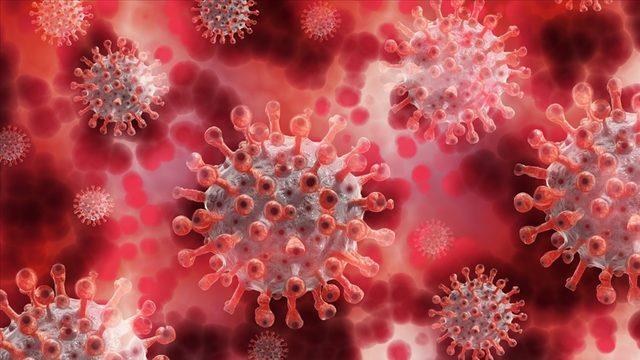MYNET SPECIAL | The monkeypox alarm has started to worry the whole world. The monkeypox disease, which started in Africa, spread to Europe for the first time yesterday, and the first case was seen in Sweden yesterday. Today, it was announced that the disease in question has spread to Asia. Pakistan announced that monkeypox was detected in three people.
THE WHOLE WORLD IS ON ALARM
Concerns have gripped the entire world as the World Health Organization has declared a “global public health emergency” for the second time in two years due to the monkeypox virus.
Türkiye IS ALSO WORRIED
Universities that host students of African origin have increased their precautions regarding monkeypox, which is also being closely monitored in Turkey. In a statement made by Karabük University, it was stated that they are conducting meticulous examinations against any situation that would endanger public health.
Monkeypox, which suddenly became a hot topic all over the world, reminded us of the coronavirus epidemic.
Regarding the disease in question In his special statement to Mynet, Medicana Ataköy Hospital Infectious Diseases Specialist Dr. Lecturer Songül Özer said, “Monkeypox (formerly known as Monkeypox) disease is not a new disease. It was diagnosed in monkeys in 1958 and in humans in 1970. A small number of cases have always been reported in the Democratic Republic of Congo, Nigeria, and some Central and West African countries. It has also spread from the African continent to other countries through infected animals and humans,” he said.
Dr. Songül Özer, an academic, emphasized that it has attracted attention since May 2022 because it has been seen for the first time in people who have no connection to Africa and who have not traveled to Africa, and summarized the process as follows:
“Since that date, it has started to be seen in various countries around the world, in America and in Europe. For this reason, the World Health Organization declared a global public health emergency. In this way, the epidemic was brought under control before it occurred. WHO ended the Global Emergency in May 2023.
Starting in May 2023, the disease began to occur with a subtype (Type 1B) of the first type called Type 1. The disease caused by this type causes more severe disease than the first type. In the outbreak caused by Type 1B, approximately 15,000 people have been infected in Congo alone since January 2024, and 461 of them have lost their lives. When the disease began to be seen in countries such as Rwanda, Burundi, and Uganda outside of Congo, WHO declared an international public health emergency again on August 14, 2024. The aim is to draw the attention of all countries to Mpox disease, to conduct surveillance work, to ensure that they immunize and take protective measures.
“IT MUTATED AND STARTED TO SPREAD RAPIDLY AMONG PEOPLE”
Özer, who stated that the etiology of the disease is ‘Monkeypox Virus’, said, “It is known that there are two different genetic types in Africa. Type 1 is more common in Central Africa, and Type 2 is more common in West Africa. Type 2 causes milder disease. The type seen in 2022 is the type that causes milder disease. However, it was determined that the type that started in Congo in 2023 and spread was a subtype of Type 1 (Type 1B), which is known to cause more severe disease. It is thought that this virus probably mutated after the first form and gained the ability to spread more rapidly among people.”
HOW IS THE DISEASE TRANSMITTED?
Answering the question “How does the disease spread between people?”, Özer said, “The disease is transmitted to humans from rodents such as squirrels, rats and mice rather than monkeys. The virus can be transmitted to humans from infected animals or humans or inanimate objects contaminated with the virus, through close contact, through contact with places such as scratches and cracks on the skin, or through the mouth, nose, eye mucosa and respiratory tract.”
Özer continued his statement as follows:
WHAT ARE THE SYMPTOMS OF MONKEYPOX DISEASE?
Mpox disease begins with general symptoms such as fever, headache, fatigue, weakness, widespread muscle pain, back pain, high fever, followed by swelling of the lymph nodes and skin rashes.

SYMPTOMS BEGIN AFTER 6-12 DAYS
Symptoms begin to appear approximately 6-12 days after contact with the virus.
On the 2nd and 3rd day of the disease, skin rashes begin to appear. The rashes, which can be seen on the face, arms and legs, palms and soles of the feet, inside the mouth, in the genital area and with the eye, first begin as redness. After a short while, the skin becomes swollen and filled with clear fluid. After a while, the clear fluid becomes cloudy and yellowish.
These skin lesions, which we call pustules, heal by crusting and disappearing. In people with a well-functioning immune system and no underlying chronic disease, the disease heals on its own within 2-4 weeks.

WHICH PEOPLE ARE AT RISK?
However, it can be more severe and cause death in people with suppressed immune systems, those receiving cancer treatment, those with chronic diseases, pregnant women, children under the age of 2, and older age groups. The latest type, Type 1B, has been found to cause 5% of deaths.
WILL IT RETURN TO THE CORONAVIRUS PROCESS?
Mpox disease is not expected to cause an epidemic like Covid-19. Because the structure of the virus is different. It is a DNA virus and therefore has a lower mutation rate. In addition, since the main transmission route is not the respiratory tract, it is not expected to spread as quickly as Covid-19 and cause a pandemic.
“CONTACT HISTORY AND DIAGNOSIS ARE VERY IMPORTANT”
A good history should be taken from people who show symptoms of the disease. The history of suspicious contact is important in diagnosis. The fluid taken from the lesions on the skin should be examined. This examination cannot be done in every laboratory. It can only be done in the form of a PCR test in special security laboratories that can examine viruses. Blood tests and antigen-antibody tests do not give accurate results.
IS THERE A MEDICINE OR VACCINE FOR MPOX DISEASE?
There is no specific medicine for Mpox disease. Antibiotics are useless because the disease is caused by a virus. In the treatment of immunocompromised individuals, various antiviral drugs and smallpox immunoglobulin have been used and have been successful in some patients.
There is an Mpox vaccine that was produced from a weakened vaccine strain of smallpox, which was previously widespread in the world, and was approved by the FDA in 2019. The smallpox vaccine, which was used routinely before 1980, provides approximately 85% protection from Mpox disease because it is from the same family. Although these vaccines, which were made 40-50 years ago, did not prevent transmission, it was observed that they were effective in preventing severe disease.

“IN THE FIRST SPREAD, 12 CASES WERE SEEN IN TURKEY”
In the first spread seen in 2022, 12 cases were seen in our country. This figure was announced by the American Centers for Disease Control and Prevention (CDC).
“THERE IS NO CASE IN TURKEY AT THE MOMENT”
In the Mpox outbreak that started in Congo with Type 1B, no case has been detected in our country yet.
WHAT ARE THE METHODS OF PREVENTION FROM MPOX DISEASE?
To be protected from Mpox disease; people who show symptoms of the disease should be isolated immediately, those who have been in contact with these people should be identified and those people should be closely monitored, and people who may come into contact with sick people, such as household members, work colleagues, etc., should take protective measures such as masks and gloves when there is a possibility of contact.
